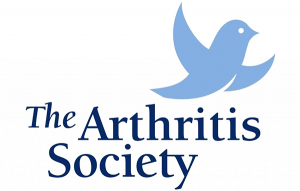Raynaud's Phenomenon
WHAT IS RAYNAUD’S PHENOMENON?
Raynaud’s phenomenon is a condition resulting from poor circulation in the extremities (i.e., fingers and toes). In a person with Raynaud’s phenomenon, when his or her skin is exposed to cold or the person becomes emotionally upset, the blood vessels under the skin tighten and the blood flow slows. This is called vasospasm. Hands and feet have fewer large blood vessels and, therefore, when a vasospasm occurs, it is harder for the blood to keep flowing and these areas may turn blue because less oxygen is reaching the skin. The skin will also feel cold because less blood is reaching the skin to keep it warm. While attacks of vasospasm may last from minutes to hours, only rarely do they cause severe tissue damage.
Raynaud’s phenomenon is named after the French doctor Maurice Raynaud, who first described the condition in the mid-1800s. The condition is also known as Raynaud’s syndrome or Raynaud’s disease.
HOW COMMON IS RAYNAUD'S PHENOMENON?
People diagnosed with scleroderma or Sjogren’s syndrome are at higher risk of developing Raynaud’s phenomenon than the general population. Raynaud’s phenomenon is present in almost all people with scleroderma and 35% of those with Sjogren’s syndrome.
WHAT ARE THE WARNING SIGNS OF RAYNAUD'S PHENOMENON?
If you notice that your fingers, feet, nose or ears become blue when you are cold or emotionally upset, you probably have Raynaud’s phenomenon. It is common in those who suffer from scleroderma or Sjogren’s syndrome, but it also occurs in those who have not been diagnosed with any form or arthritis. In some cases, especially in people with scleroderma, small, painful sores may appear on the tips of the fingers or toes.
If the condition progresses the blood flow to the area can become permanently decreased. If this happens in your hands, your fingers can become thin and tapered and have smooth shiny skin and slow growing nails.
WHAT CAUSES RAYNAUD'S PHENOMENON?
Raynaud’s phenomenon is often associated with diseases that may affect the blood vessels, such as artherosclerosis, rheumatoid arthritis and scleroderma. It can also follow repeated trauma to an area, particularly vibrations such as those caused by typing or playing the piano.
WHAT CAN YOU DO ABOUT RAYNAUD'S PHENOMENON?
Establishing the correct diagnosis is important, because something can be done to manage most forms of arthritis, and most therapies work best when started early in the disease.
Your doctor may be able to diagnose Raynaud’s phenomenon based on a review of your medical history and by observing the effect of cold on areas such as your fingers. Sometimes your doctor may order certain tests, such as blood flow tests, to help confirm the diagnosis or to distinguish among different diseases.
Although there is no cure for Raynaud’s phenomenon there are things you can do to help manage the condition. Your active involvement in developing your prescribed treatment plan is essential.
Medicine
If you have Raynaud’s phenomenon your doctor may prescribe medications such as nifedipine, dilatiazem or nitroglycerine. These help relax the walls of the blood vessels.
Protect Your Body
By wearing gloves and warm socks in cold weather, your skin is protected from cold air, which reduces the risk of vasospasm. If reaching into the freezer for food triggers Raynaud’s phenomenon try wearing gloves or oven mitts during this activity.
If you smoke, stop smoking. Smoking triggers vasospasms in your whole body and will worsen the symptoms of Raynaud’s phenomenon.
Relaxation
By not allowing yourself to get emotionally upset, your nervous system does not trigger vasospasms and your blood circulation remains normal. Developing good relaxation and coping skills can give you a greater feeling of control over your arthritis and a more positive outlook.
